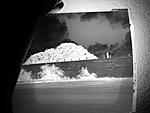I have been struggling with my metering technique and hope someone can give me some insight.
I know it will be asked so I will provide some info about my technique/materials.
Tmax400 at 200
Rodinal semi stand dev inversions at each 15 min.
I started initially metering for shadows but this caused my highlights which are usually fluffy white FL clouds to lose texture and look unappealing.
Now I am trying to guess at where middle grey would fall and use that, I've had positive results but I feel this is just getting lucky while gambling and will not always work.
I have both a spot and incidence meter. Incidence readings usually give me flat prints, where as my new method of spotting for middle grey is giving me nice contrast in print.
Does anyone have any pointers for me? I have read everything I can about the zone system but at this point I understand I am not ready to begin trying this. I will begin testing tri-x320 for true film speed which is the first step in using the zone system. However for now I need a system or method that will yield repeatable consistent good exposures.
I have attached a bad picture of a negative I found to be successful in exposure. I spot metered for the gravel in the foreground.
Edit: I just thought about getting one of those grey cards and spotting it if possible in the same light as the scene.




 Reply With Quote
Reply With Quote


Bookmarks